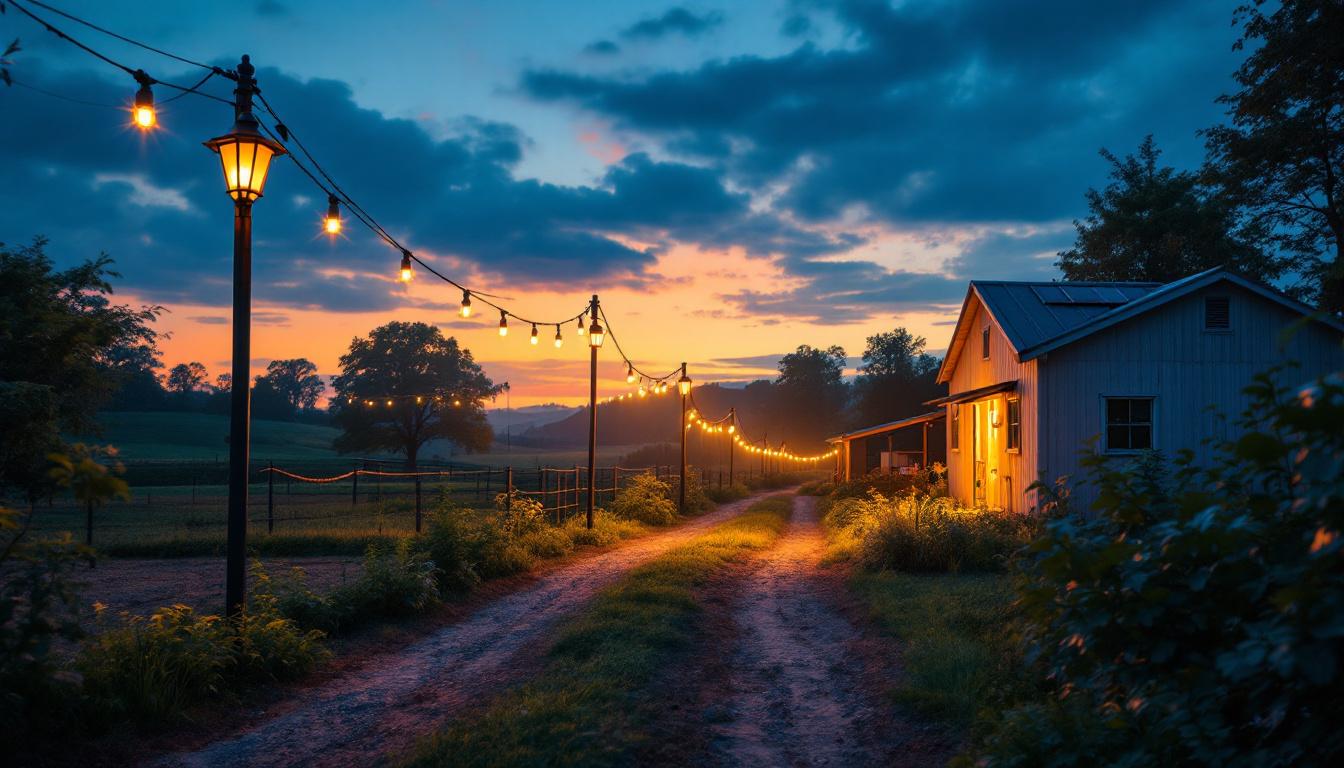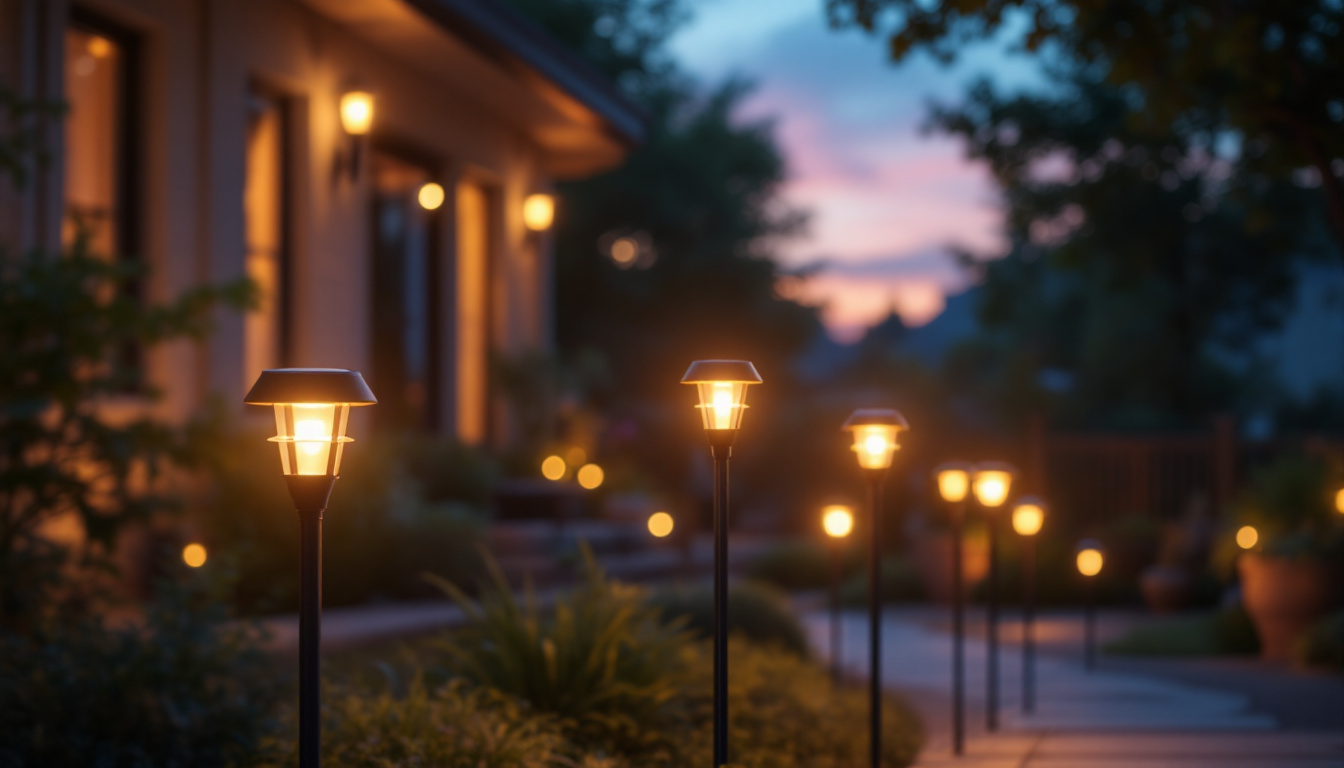
Lighting contractors working on outdoor farm projects face a set of unique challenges that differ significantly from residential or commercial lighting installations. Farms are expansive, often rugged environments where lighting must serve multiple functions—from enhancing security and safety to supporting agricultural productivity and animal welfare.
Unlike urban or suburban lighting projects, farm lighting must withstand harsh environmental conditions such as dust, moisture, temperature fluctuations, and exposure to chemicals like fertilizers and pesticides. Additionally, farms may have limited access to electrical infrastructure, requiring contractors to consider alternative power sources or specialized wiring solutions.
Recognizing these challenges early on is crucial for contractors to design lighting systems that are both durable and efficient, ensuring long-term performance and minimizing maintenance costs. The selection of materials becomes paramount; for instance, using corrosion-resistant fixtures can significantly extend the lifespan of lighting installations in environments prone to chemical exposure. Furthermore, the strategic placement of lighting fixtures can optimize coverage while reducing energy consumption, ultimately leading to more sustainable farming practices.
Outdoor farm lighting is not just about illumination; it plays a pivotal role in operational efficiency and safety. Proper lighting can deter theft and vandalism, reduce accidents during nighttime operations, and improve visibility for workers handling machinery or livestock. Furthermore, certain crops and animals benefit from specific lighting conditions that can influence growth cycles and behavior.
For example, poultry farms often use lighting to regulate the laying cycles of hens, while greenhouse operations may require supplemental lighting to extend daylight hours during shorter seasons. Understanding these agricultural nuances helps lighting contractors tailor their solutions to meet the specific needs of each farm. Moreover, the integration of smart lighting technologies, such as motion sensors and timers, can enhance energy efficiency while providing the necessary illumination only when and where it is needed. This not only reduces operational costs but also aligns with modern sustainable farming practices, making it an essential consideration for any contractor aiming to deliver cutting-edge solutions.
Lighting contractors frequently ask about the most appropriate fixtures for outdoor farm use. The answer depends on several factors, including the area to be illuminated, the purpose of the lighting, and environmental conditions.
High-intensity LED floodlights are popular for large open areas such as barns, loading zones, and perimeter fences due to their energy efficiency, long lifespan, and durability. LED fixtures with high IP (Ingress Protection) ratings—typically IP65 or higher—are recommended to ensure resistance to dust and water.
For pathways and smaller work areas, contractors often use pole-mounted or wall-mounted LED fixtures with adjustable angles to provide targeted illumination without causing light pollution or disturbing livestock.
Moreover, the integration of smart lighting technology is becoming increasingly common in farm settings. These systems can be programmed to adjust brightness based on the time of day or specific tasks, enhancing both energy efficiency and functionality. For example, during peak operational hours, lights can be set to a brighter level, while dimming at night can help maintain a peaceful environment for animals while still ensuring safety for workers navigating the farm.
One of the most sensitive aspects of farm lighting is its effect on animals. Improper lighting can disrupt natural behaviors, leading to stress, reduced productivity, or health issues. Lighting contractors must consider factors such as light intensity, color temperature, and timing.
Warm white light (around 2700K to 3000K) is generally less disruptive to animals compared to cool white or blue light. Additionally, implementing dimmable fixtures or motion-activated lighting can reduce constant exposure, allowing animals to maintain their natural rhythms.
Consulting with veterinarians or animal behavior specialists can provide valuable insights into designing lighting systems that promote animal welfare. Furthermore, the strategic placement of lighting can help minimize shadows and glare, which can be disorienting for livestock. By ensuring that light is evenly distributed and avoiding harsh contrasts, contractors can create a more comfortable environment that supports the well-being of the animals.
Farms often present logistical challenges for electrical installations. Long distances between power sources and lighting fixtures require careful planning to avoid voltage drops and ensure safety. Lighting contractors should use appropriately rated cables and consider voltage drop calculations during the design phase.
In remote areas, solar-powered lighting systems are gaining popularity as they reduce reliance on grid electricity and lower operational costs. Battery storage and energy-efficient LED fixtures complement these systems, providing reliable illumination even during power outages.
Grounding and surge protection are also critical to protect equipment from lightning strikes and electrical faults common in open farm environments. Additionally, regular maintenance checks and inspections of wiring and fixtures are essential to prevent potential hazards and ensure longevity. Implementing a routine schedule for these checks can help identify issues early, allowing for timely repairs that keep the farm running smoothly and safely.
Energy consumption is a significant concern for farm owners, making energy-efficient lighting solutions a priority for contractors. LEDs have revolutionized outdoor lighting by offering superior efficiency, reduced heat output, and longer service life compared to traditional incandescent or metal halide lamps.
Implementing lighting controls such as timers, photocells, and motion sensors can further optimize energy use by ensuring lights operate only when needed. For example, perimeter lights can be programmed to activate during specific hours or in response to movement, enhancing security while conserving power.
Light pollution is an often-overlooked issue in outdoor farm lighting. Excessive or poorly directed light can disrupt local wildlife and contribute to skyglow, affecting nearby communities. Lighting contractors should employ fixtures with proper shielding and aim lights downward to minimize spillover.
Using warmer color temperatures and limiting the duration of lighting can also reduce ecological impact. These practices not only benefit the environment but may align with local regulations or certification standards for sustainable farming.
Safety is paramount in farm lighting installations. Contractors must adhere to national and local electrical codes, including those specific to agricultural settings. Proper installation techniques, use of weatherproof and impact-resistant fixtures, and clear labeling of circuits help prevent accidents and facilitate maintenance.
Additionally, lighting designs should consider emergency scenarios, such as providing backup lighting in critical areas like livestock shelters or chemical storage facilities. Collaborating with farm owners to understand operational workflows ensures that lighting supports safe and efficient farm management.
Outdoor farm lighting systems are exposed to dirt, insects, animal interference, and weather extremes, all of which can degrade performance over time. Lighting contractors often receive questions about maintenance schedules and techniques to prolong fixture lifespan.
Regular cleaning of lenses and housings prevents light output reduction caused by dust and grime. Inspecting wiring and connections for corrosion or damage is essential, especially in areas with high moisture or chemical exposure.
Replacing fixtures with modular designs or using components with standardized parts can simplify repairs and reduce downtime.
When lighting issues arise, contractors should systematically diagnose problems by checking power supply integrity, fixture condition, and control system functionality. Common issues include flickering lights due to voltage fluctuations, complete outages from blown fuses or tripped breakers, and sensor malfunctions.
Utilizing diagnostic tools such as multimeters and thermal cameras can help identify hidden faults. Keeping detailed records of installations and maintenance activities supports efficient troubleshooting and client communication.
Smart lighting technology is increasingly being adopted in agricultural settings. These systems allow remote monitoring and control via mobile apps or centralized platforms, enabling farm managers to adjust lighting schedules, monitor energy consumption, and receive alerts about system faults.
For lighting contractors, this trend presents opportunities to offer value-added services such as system programming, integration with other farm management technologies, and ongoing technical support.
As sustainability becomes a priority, solar-powered lighting combined with energy storage solutions is gaining traction on farms. Advances in photovoltaic efficiency and battery technology have made these systems more reliable and cost-effective.
Contractors knowledgeable in renewable energy integration can help farms reduce their carbon footprint and achieve energy independence, aligning with broader environmental goals and potential incentive programs.
Emerging research on circadian rhythms in plants and animals is influencing farm lighting design. Adaptive lighting systems that adjust intensity and color temperature throughout the day can enhance animal welfare and optimize plant growth cycles.
Lighting contractors who stay informed about these scientific developments can differentiate their services by offering cutting-edge solutions tailored to the biological needs of farm operations.
Outdoor farm lighting requires a specialized approach that balances durability, functionality, energy efficiency, and environmental sensitivity. Lighting contractors who understand the distinct demands of agricultural environments can deliver systems that improve safety, productivity, and sustainability.
By addressing common questions related to fixture selection, animal impact, wiring, maintenance, and emerging technologies, contractors can build trust with farm clients and position themselves as experts in this niche market. Continuous learning and adaptation to new trends will ensure contractors remain competitive and capable of meeting the evolving needs of modern agriculture.
Ready to enhance your outdoor farm lighting projects with the best in spec-grade lighting? Look no further than LumenWholesale, where we provide contractors with exceptional lighting solutions at wholesale prices. Our commitment to quality and affordability ensures that you can equip your agricultural installations with durable, energy-efficient lighting that meets the highest industry standards. Take advantage of our hassle-free bulk buying options and free shipping to get your premium lighting without any hidden fees. Elevate your farm lighting systems today by visiting Wholesale Lighting at the Best Value and discover the LumenWholesale difference.

Discover effective strategies and expert tips for lighting contractors on installing and troubleshooting overhead fan switches.

Discover the essential checklist for lighting contractors focusing on exterior motion sensors.

Discover how the best-rated solar outdoor lights are revolutionizing the lighting industry with eco-friendly technology, cost savings, and innovative designs.

Explore how Chadelier is revolutionizing modern lighting solutions with innovative designs and energy-efficient technology.